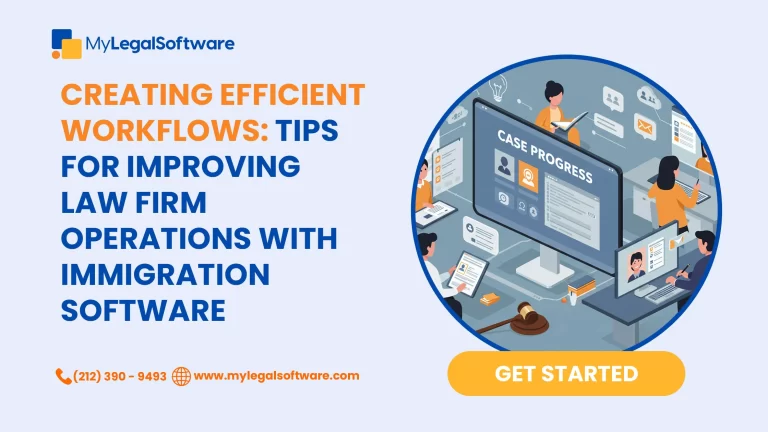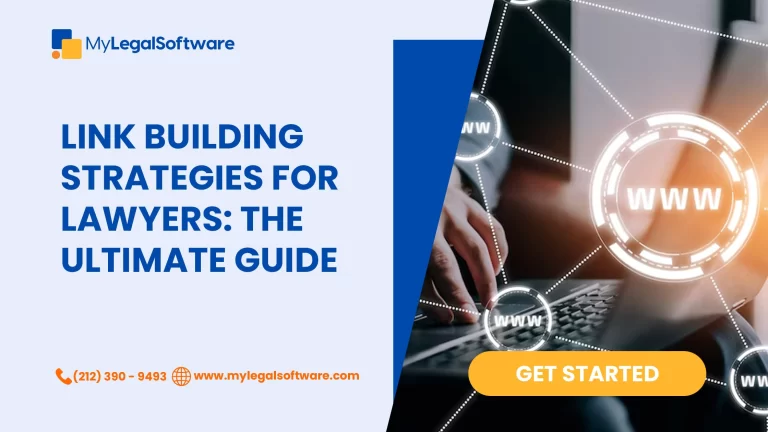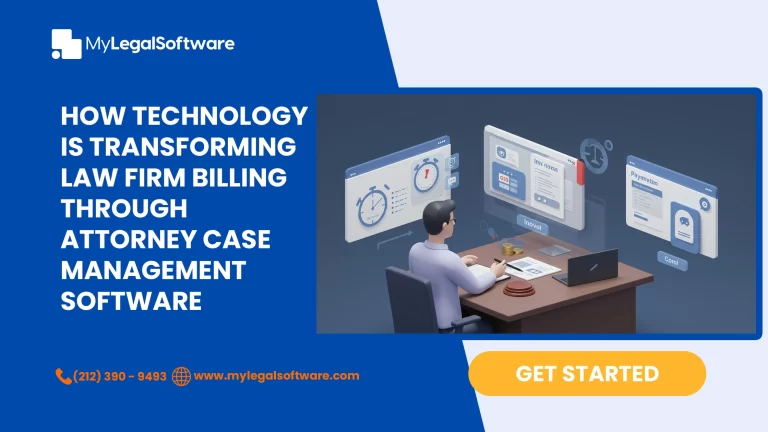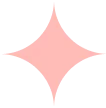The Power of Long-tail Keywords for Your Law Firm Long-tail keywords play a significant role in improving the online visibility of your law firm. You can attract highly relevant traffic to your website by targeting specific and less competitive keywords.
These keywords are often longer and more specific, allowing you to capture the attention of potential clients looking for a precise legal service. To leverage the power of long-tail keywords, it is crucial to understand the search intent behind them.
By conducting thorough keyword research, you can identify the specific phrases and questions potential clients use when searching for legal assistance. By strategically incorporating these long-tail keywords into your website content, you can increase your chances of ranking higher in search engine results and attract highly targeted traffic.
This targeted approach increases the likelihood of attracting qualified leads and helps you build a strong online reputation within your specific legal niche. Incorporating long-tail keywords into your law firm’s website content is a strategic SEO practice and a crucial step in staying ahead of your competitors.
The Power of Long-tail Keywords
The Impact of Long-tail keywords possesses great potential to enhance the reach and visibility of your law firm.
- 1. Enhanced Relevance: Long-tail keywords allow for more specific search queries, enabling your firm to connect with individuals seeking highly targeted legal services.
- 2. Lower Competition: Due to their specificity, long-tail keywords face relatively lower competition from other law firms, allowing your firm to stand out amidst the crowd.
- 3. Increased Conversion Rates: By aligning your content with long-tail keywords, you attract visitors who are more likely to convert into clients due to their specific needs.
- 4. Improved Search Engine Rankings: Strategically incorporating long-tail keywords into your website’s content increases its chances of ranking higher in search engine results.
- 5. Enhanced User Experience: Long-tail keywords enable users to find exactly what they are searching for, leading to higher user satisfaction and potentially repeat visits or referrals.
Moreover, it is vital to note that long-tail keywords provide unique details that cater to the specific requirements of individuals seeking legal services. Understanding the power of long-tail keywords can significantly boost your firm’s online presence and client acquisition efforts.
A true history of the impact of long-tail keywords reveals their ability to revolutionize law firm marketing strategies. By recognizing the potential of these targeted keywords, law firms have witnessed increased traffic, improved search rankings, and a higher conversion rate, ultimately leading to business growth and success.
The Process of Keyword Research
In this section, I’ll walk you through the process of keyword research, which plays a vital role in optimizing your website for search engines. To start, we need to define your target audience and narrow down the focus of your legal services.
Then, we’ll brainstorm relevant topics that align with your expertise and your clients’ needs. Utilizing keyword research tools will aid us in uncovering the most effective long-tail keywords to target. Analyzing search intent will help us understand what potential clients seek while assessing keyword metrics.
This will guide us in selecting the most promising keywords to incorporate into your website content.
Define Your Target Audience
Establishing the specific group of people you want to target is crucial to tailor your content and marketing efforts effectively. This process can be referred to as Defining Your Target Audience. Here are five key points to consider when defining your target audience:
- Demographics: Understand the age, gender, location, income level, and other relevant demographic details of your ideal audience.
- Psychographics: Dive deeper into your audience’s interests, values, attitudes, behaviors, and motivations.
- Needs and Pain Points: Identify your audience’s challenges or problems and determine how your products or services can address those needs.
- Online Behavior: Analyze where your target audience spends their time online, including social media platforms, forums, websites, and blogs.
- Competitive Analysis: Research similar businesses or competitors within your industry to gain insights about their target audience.
To further enhance this process of defining your target audience for maximum impact and success in reaching them, Implement a system for collecting customer feedback regularly. You can refine your understanding of their needs by actively listening to their preferences and opinions.
Pro Tip: Constantly revisit and update your target audience personas as consumer behaviors and market trends evolve. Unleash your inner brainstorming genius and discover the hidden gems of relevant topics for your law firm’s online presence.
Brainstorm Relevant Topics
Brainstorming Key Topics for Optimal Results
To effectively brainstorm relevant topics, it is crucial to understand your target audience and their needs. Utilizing keyword research tools can provide valuable insights into popular search queries. Analyzing search intent and assessing keyword metrics further refine the topic selection process.
Table: Key Factors for Brainstorming Relevant Topics
| Factors | Description |
|---|---|
| Target Audience | Identify the specific demographic or market segment that your law firm wants to reach. This helps narrow down the relevant topics. |
| Keyword Research Tools | Utilize tools such as Google Keyword Planner or SEMrush to identify popular keywords related to your law firm’s practice areas. |
| Search Intent Analysis | Examine the intention behind user searches by looking at the types of content and information they seek. This aids in selecting topics that align with users’ needs. |
| Keyword Metrics Assessment | Evaluate factors like search volume, competition, and relevance to determine the effectiveness of potential topics for driving traffic and conversions. |
In addition, when brainstorming relevant topics, consider incorporating unique details about your law firm’s expertise or industry trends that may not have been covered extensively before.
Use Keyword Research Tools
Keyword research tools play a crucial role in maximizing the potential of your digital marketing strategy. These tools assist in uncovering and analyzing relevant keywords that can drive targeted traffic to your website. Here are six ways you can optimize your keyword research using these cutting-edge tools:
- Identify profitable long-tail keywords.
- Discover trending topics within your niche.
- Gain insights into search volumes and competition levels.
- Analyze the intent behind users’ search queries.
- Evaluate keyword metrics such as CPC, difficulty, and search volume trends.
- Uncover related keywords for expanded content opportunities.
Utilizing these sophisticated tools can enhance your keyword selection process and gain a competitive edge in the online marketplace.
Analyze Search Intent
Understanding the intention behind online searches is crucial to optimize your content for effective visibility. By examining the purpose behind user queries, you can tailor your content to provide relevant and valuable information and attract the right audience.
Below is a table that illustrates how analyzing search intent can enhance your keyword research process:
| Search Intent | Description |
|---|---|
| Informational | Users are seeking general information or answers to specific questions. This may include “how-to” guides, tutorials, or definitions. |
| Navigational | Users are looking for a specific website or webpage. They use keywords related to a particular brand, company, or product name, such as “Facebook login.” |
| Transactional | Users intend to make a purchase or engage in a specific action, such as signing up for a newsletter or downloading an e-book. Keywords often include terms like “buy,” “discount,” or “best price.” |
| Other Nuances | In addition to these categories, other nuances within search intent may vary across industries. |
Understanding these distinctions will help you target keywords and create content that aligns with users’ needs and desires.
Optimizing Legal Content for Search Intent
To optimize your content for search intent, consider the following steps:
- Create high-quality and unique content that addresses the specific needs identified in each category.
- Use relevant keywords strategically throughout your content to align with users’ intentions.
- Optimize meta tags and descriptions with compelling language that accurately represents what users will find on your page.
- Enhance the user experience by providing easy navigation, fast loading times, and mobile-friendly designs.
- Leverage rich media such as images, videos, and infographics to engage users visually and provide additional value.
By understanding and analyzing search intent effectively, you can ensure that your content matches what users are seeking when they perform online searches. This targeted approach not only improves visibility but also enhances user satisfaction and conversions. Assessing keyword metrics is like peering into the crystal ball of search engine success—a vital step to ensure your law firm gets the attention it deserves.
Assess Keyword Metrics
Understanding and Analyzing Keyword Metrics for Effective Content Optimization
It is crucial to analyze various data points associated with the keywords to evaluate them effectively. These metrics provide valuable insights into the performance and potential of keywords. Businesses can make informed decisions about optimizing their content and targeting specific audiences by assessing keyword metrics.
The table below presents key factors to consider when assessing keyword metrics:
| Metric | Description |
|---|---|
| Search Volume | The number of times a keyword is searched for in a given period. |
| Competition | The level of competition among advertisers bidding on the keyword. |
| Click-through | The percentage of users who click on search results containing the keyword. |
| Conversion | The rate at which users who clicked on a result with the keyword took a desired action, such as making a purchase or submitting a form. |
In addition to these key metrics, other factors like searcher demographics, geolocation, and seasonality should also be considered when assessing keyword performance.
Pro Tip: Regularly monitor and update your keyword strategy based on evolving trends and visitor behavior to maximize your online visibility and reach your target audience effectively. Unlock the secret to content success with these optimization tips that will shine your law firm’s online presence brighter than a guilty verdict.
Content Optimization Tips
When it comes to content optimization for your law firm, there are a few key tips to remember.
- Develop unique and engaging content that showcases your expertise in the legal field.
- Incorporate long-tail keywords throughout your content to enhance visibility and attract relevant traffic to your website.
- Optimize meta tags and descriptions to improve search engine rankings and increase click-through rates.
- Enhance the user experience on your website by providing easy navigation, fast loading times, and mobile-friendly designs.
- Leverage rich media such as images, videos, and infographics to engage users visually and provide additional value.
Develop Unique and Engaging Content
Developing Exceptional and Captivating Content Developing unique and engaging content is crucial to online marketing. By creating exceptional and captivating content, you can effectively capture the attention of your target audience and keep them engaged. Here are six key points to consider when developing such content:
- Create original and insightful articles that provide valuable information to your readers.
- Incorporate storytelling techniques to make your content more relatable and memorable.
- Include visuals, such as images or infographics, to enhance the overall presentation of your content.
- Use a conversational tone and personalized language to connect with your audience deeply.
- Optimize your content for search engines by incorporating relevant keywords naturally within the text.
- Add interactive elements like surveys or quizzes to encourage user engagement and interaction.
Creating Authentic Content
Moreover, it is important to note that for your unique and engaging content to stand out from the competition, you should strive for authenticity. This can be achieved by sharing personal experiences, case studies, or expert opinions that add credibility to your content. You can create a strong bond with your target audience by offering fresh perspectives and thought-provoking insights. To further enhance the effectiveness of developing unique and engaging content, here are some additional suggestions:
- Conduct thorough research: Take the time to gather relevant information on the topic you plan to write about. This will help you develop well-rounded and comprehensive content.
- Understand your target audience: Tailor your content to address their specific needs, pain points, or interests. This will ensure that your content resonates with them on a deeper level.
- Use compelling headlines: Craft catchy titles that instantly grab attention and generate curiosity among readers.
- Incorporate visual elements: Use high-quality images or videos within your content to make it more visually appealing and engaging.
- Encourage reader interactions: Include calls-to-action throughout your content to prompt readers to share their thoughts, opinions, or experiences.
By following these suggestions and continuously refining your approach to developing unique and engaging content, you can establish your brand as a trusted and authoritative source while building a loyal readership. Incorporate keywords strategically and watch your law firm rise to the top of search engine results like a legal eagle on caffeine.
Incorporate Keywords Strategically
Incorporating keywords strategically is crucial for optimizing your content and improving its visibility. By strategically placing relevant keywords throughout your website, you can enhance your search engine rankings and attract more targeted organic traffic.
Here is a 5-step guide to help you incorporate keywords strategically:
- Identify Relevant Keywords: Use keyword research tools to find specific long-tail keywords relevant to your target audience and align with their search intent.
- Analyze Keyword Metrics: Assess the identified keywords’ search volume, competition, and difficulty level. Focus on those with a good balance of high search volume and low competition.
- Place Keywords Naturally: Incorporate the selected keywords naturally into your content, ensuring they flow seamlessly within the context. Avoid overstuffing or forcing keywords, as it may negatively impact user experience.
- Optimize Meta Tags: Include relevant keywords in your meta title and description tags to help search engines clearly understand your content. This will improve your click-through rates in the search results.
- Monitor Performance and Refine: Regularly monitor the performance of your optimized content using analytics tools. Observe keyword rankings, organic traffic, bounce rates, and user engagement metrics to make data-driven refinements if needed.
Incorporating keywords strategically helps with SEO and enhances user experience by providing valuable information tailored to their needs. By following this guide, you can maximize the visibility and effectiveness of your content online.
Optimizing meta tags and descriptions with finesse is the key to captivating search engines and users.
Optimize Meta Tags and Descriptions
Optimizing Meta Tags and Descriptions plays a crucial role in enhancing the visibility of your website content. By strategically refining these elements, you can improve your search engine rankings and attract more relevant traffic to your website.
- Utilize targeted keywords: Include relevant keywords within your meta tags and descriptions to effectively communicate your web page’s purpose and content.
- Craft compelling descriptions: Create captivating descriptions that entice users to click on your website in search engine results pages (SERPs).
- Write concise meta titles: Craft concise yet descriptive titles that accurately reflect the content of your web page.
- Avoid duplicate content: Ensure each webpage has unique meta tags and descriptions to avoid confusion among search engines and users.
- Stay up-to-date: Regularly review and update your meta tags and descriptions to align with any changes in keyword trends or modifications to your webpage’s content.
In addition, optimizing meta tags and descriptions helps search engines understand the relevance of your webpage to user queries, ultimately improving the overall user experience. Pro Tip: Incorporate a call-to-action within your meta description to encourage users to click through to your website. Make the user experience smooth sailing because even the most patient surfers can’t ride the waves of a slow-loading website.
Enhance User Experience
User Satisfaction Amplification Techniques
- Utilize clear and intuitive navigation, making it easy for users to find what they want.
- Optimize website loading speed, ensuring a seamless browsing experience.
- Implement responsive design, allowing the site to adapt to different screen sizes and devices.
- Incorporate interactive elements like quizzes or calculators to engage users and provide value.
- Personalize the user experience by offering relevant recommendations or customization options.
These techniques can significantly enhance user satisfaction, increasing engagement and conversions. By prioritizing user experience, law firms can establish trust and credibility with their audience, ultimately driving business growth.
Furthermore, studies have shown that websites prioritizing user experience are more likely to rank higher in search engine results pages (SERPs) and attract organic traffic. According to a Google study, sites that load quickly on mobile devices have a higher chance of retaining users and converting them into customers.
Leverage Rich Media
Spice up your content with rich media because a picture is worth a thousand SEO-friendly words.
Professionals and businesses can leverage rich media resources to enhance user engagement and relevance. By integrating visually stimulating elements such as images, videos, infographics, and interactive content into their online platforms, they can create a more immersive and captivating experience for their target audience.
To further illustrate the impact of leveraging rich media, let’s take a closer look at some key aspects:
1. Visual Appeal
Rich media, including images, videos, and infographics, can significantly enhance the visual appeal of your content. Humans are naturally drawn to visual elements, making capturing and retaining the audience’s attention easier.
2. Improved Engagement
Interactive elements like videos and infographics encourage user interaction and engagement. Videos, for instance, can convey complex information more digestibly and engagingly, keeping visitors on your site longer.
3. Enhanced Understanding
Rich media helps convey complex legal concepts more effectively. For instance, an infographic can break down intricate legal processes into easily understandable visuals, making legal information more accessible to your audience.
4. Higher Retention
Studies show that people remember visual content better than text alone. Rich media can help your audience retain and recall key information, which is especially valuable in the legal field where details matter.
5. Shareability
Visual content is highly shareable on social media platforms. Engaging videos, compelling images, and informative infographics are more likely to be shared, expanding your law firm’s reach and visibility.
6. SEO Benefits
Search engines often favor pages with rich media content. Incorporating images and videos with relevant alt text and descriptions can improve your website’s SEO, leading to higher organic search rankings.
In addition to these benefits, incorporating rich media also aids in establishing credibility and trust among potential clients. By presenting information in an engaging format, law firms can effectively communicate complex legal concepts while maintaining their audience’s attention.
Pro Tip: When utilizing rich media elements, ensure they are optimized for various devices and screen sizes to provide the best viewing experience across different platforms.
FAQs on Long-Tail Keywords For Your Law Firm
What is the importance of conducting keyword research for an SEO campaign?
Keyword research is essential for an effective SEO campaign. It helps attorneys identify and analyze the terms and phrases users enter into search engines. By understanding these search queries, attorneys can align their website content with user intent and rank higher in search engine result pages (SERPs).
Why should attorneys focus on long-tail keywords for their SEO efforts?
Attorneys should focus on long-tail keywords because they are more specific and indicate higher user intent and conversion potential. While they may have lower search volumes, targeting long-tail keywords allows attorneys to attract a niche audience and provide them with the precise information they seek.
How can incorporating long-tail keywords into content benefit a law firm?
Incorporating long-tail keywords into content can benefit a law firm by helping them outrank competing websites and attracting highly relevant and motivated visitors. By targeting specific long-tail variations, law firms can ensure that their content aligns with the needs and preferences of their target audience.
What are the essential steps to conduct successful keyword research for attorneys?
The essential steps to conduct successful keyword research for attorneys include defining the target audience, brainstorming relevant topics, using keyword research tools, analyzing search intent, and assessing keyword metrics. By following a structured and data-driven approach, attorneys can unlock the power of SEO through keyword research.
How can attorneys optimize their content for better search rankings?
Attorneys can optimize their content by developing unique and engaging content, strategically incorporating keywords throughout their content, optimizing meta tags and descriptions, enhancing user experience, and leveraging rich media. These optimization techniques help improve search rankings and attract more visitors to their website.
What are some tips for attorneys to maintain and improve their search rankings?
To maintain and improve search rankings, attorneys should stay updated with the latest trends and algorithm changes, adapt their SEO strategy accordingly, and continuously monitor and optimize their website. By investing time and effort into keyword research and optimization, attorneys can position their law firm at the forefront of search engine results and drive success and growth in the digital landscape.









